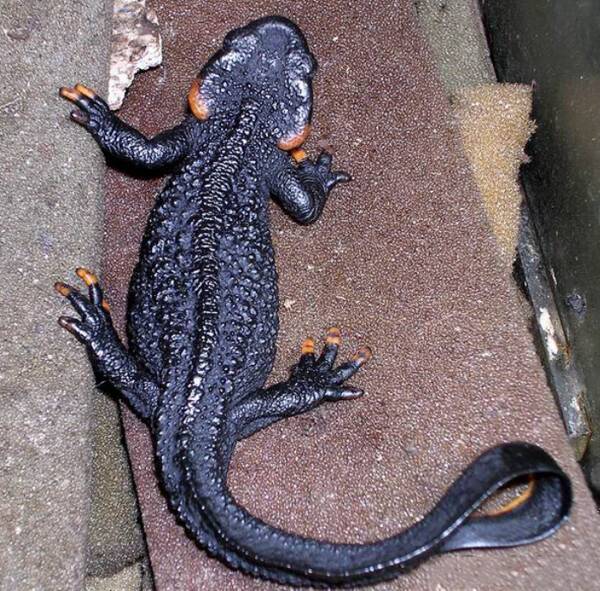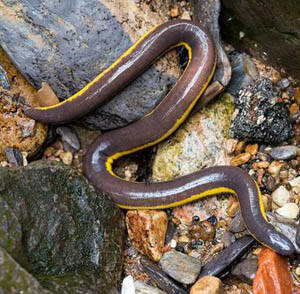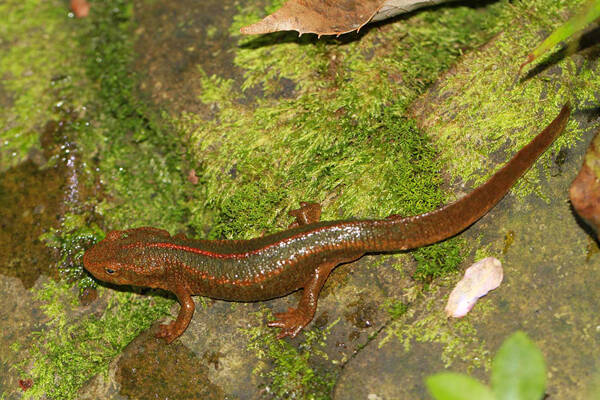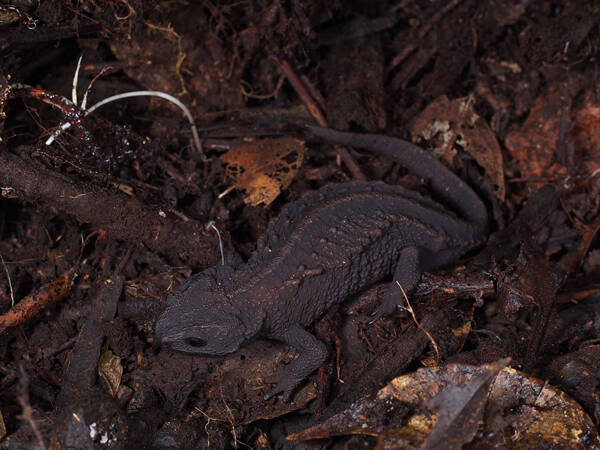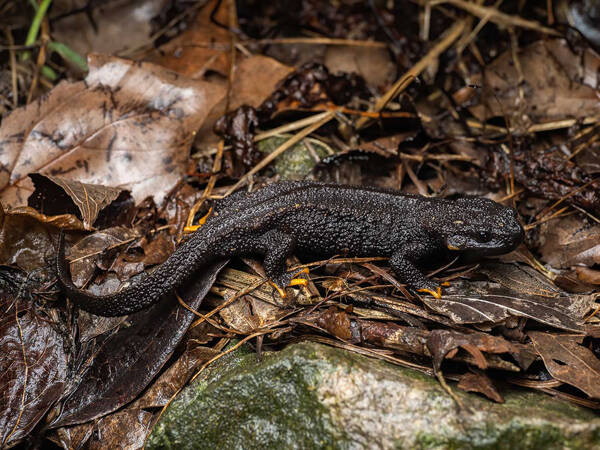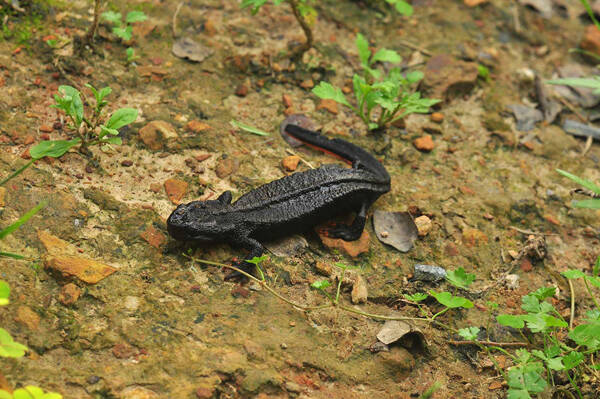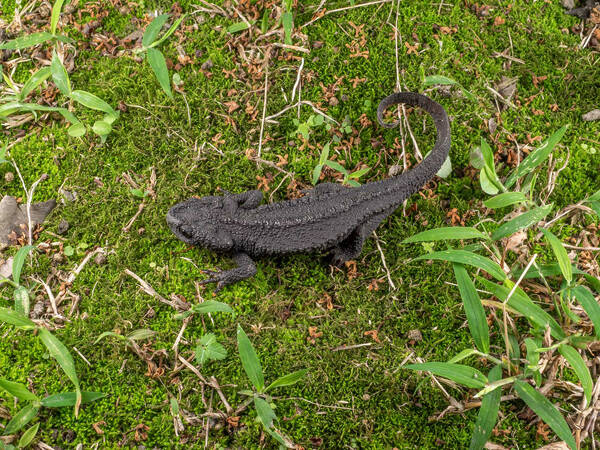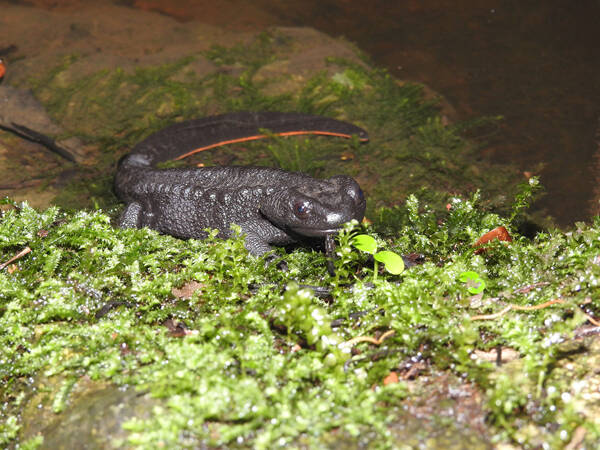Liangshantriton taliangensis
IUCN
LCBasic Information
Scientific classification
- name:Liangshantriton taliangensis
- Scientific Name:Liangshantriton taliangensis,Taliang Knobby Newt,Tylototriton taliangensis,Daliang warty newt
- Outline:Urodela
- Family:Caudata Salamandridae Salamander
Vital signs
- length:186-230mm
- Weight:
- lifetime:
Feature
The trunk is stout, the tail is long and narrow, the skin is very rough and covered with warts, and the body and tail are brown-black or black.
Distribution and Habitat
Endemic to China, distributed in Sichuan (Hanyuan, Mianning, Shimian, Meigu, Zhaojue, Ebian, Mabian).
Lives in mountain depressions with dense vegetation and humid environment at an altitude of 1390-3000m.
Appearance
The head is flat, the head length is slightly longer than the head width; the snout is high, the snout end is truncate, nearly square, the nostrils are close to the snout end, and there are no lip folds; there is no chimney, and the vomer dentition is in an inverted V shape. The skin is very rough; the ridges on both sides of the back of the head are not very obvious, and the rear end is curved inward into an arc; the top of the head is concave, the back of the body is covered with grains, there are no rib grooves, and there are no round scrofula grains on both sides; the neck folds are obvious, There are horizontal stripes on the ventral surface of the body; the tail is small and sparse.
Details
The big newt is a tailed amphibian of the family Salamandridae and the genus Salamandridae. It lives in mountain depressions with dense vegetation and humid environment at an altitude of 1390-3000 meters. It mainly lives in water bodies with a water depth of 54.59-60.93 cm, pH 5.16-7.18, water temperature 5.16-18.63℃, and turbidity 18.75-20.73; and the ammonia nitrogen and phosphate content are low, which are 0.46 mg/L and 0.04-0.05 mg/L respectively, and the dissolved oxygen is 11.25±1.44 mg/L; the bottom of the water body is mostly humus, and there are many insect larvae; the vegetation in the water body is mainly composed of emergent vegetation and submerged vegetation, with coverage rates of respectively 0.42-0.48, 0.28-0.36, wet vegetation includes sedge, reed, calamus, etc., submerged vegetation is mainly snapdragon, slopes have vegetation, including trees with a canopy density of 0.26, shrubs with a canopy density of 0.26-0.29, and their heights vary from 60.48-95.48 cm, herbaceous coverage between 0.23-0.92, and heights between 17.67-19.35 cm. The breeding grounds are all gentle slopes with a slope of 24.80°-29.32°.
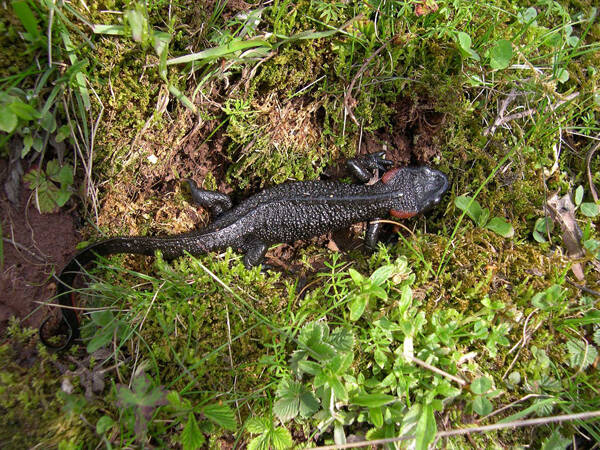
Adult salamanders are mainly terrestrial, hiding in caves, earth holes or under grass during the day and going out to forage for insects and other small animals at night. They can crawl on land and underwater, and can also swim in water. When crawling on land and underwater, the head is raised, the limbs are on the ground, and the front and hind limbs move alternately to crawl forward. At the same time, the body and tail swing left and right in an "S" shape. The crawling speed is slow, the route is not fixed, and the anti-capture ability is weak; when moving in water, the front limbs are stretched back and close to the body, and the hind limbs are also stretched back to a relaxed state and swing with the body. When moving, the tail swings left and right in an "S" shape to make the body move forward. It swims quickly in the water and can flexibly change the direction of movement. The anti-capture ability is stronger than on land.
The water bodies where Daliang Newt breeds are mostly covered with emergent and submerged vegetation, which can provide a good cover for Daliang Newt's underwater activities. Plants are also good attachments for Daliang Newt's fertilized eggs. In addition, the bottom of the water bodies is mostly humus, and there are many insect larvae, which can provide a good food source for the growth and development of Daliang Newt larvae. There are many shrubs and taller herbs growing on the slopes, which provide a cover for Daliang Newt's land activities and are conducive to its safe migration.
In May and June, they enter still ponds, swamp puddles, rice fields and slow-flowing streams to mate, and mating takes place in the water. Single eggs are scattered among aquatic plants or sink to the bottom of the water. Eggs and larvae develop and grow in the water, and generally complete metamorphosis in the same year.
During the breeding season, mating postures have been observed indoors: the male newt lies on top of the female newt, and the male newt flips forward and backward with its forelimbs, holding the female newt's forelimbs, and swims in the water with the help of the swing of its tail; there are also some that crawl on land, with the front and back limbs of the male and female newts walking on the ground alternately. The eggs are scattered among the water plants. It is said that there are many warty newts in the water during this period, and sometimes they can even be easily obtained in the water; after the breeding season, they are extremely rare, probably because they leave the water and live on land after laying eggs.
The ecological environment quality of the newt's habitat has declined, and its population is very small.
It is listed in the second level of the "List of National Key Protected Wildlife in China".
